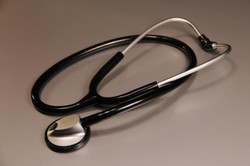Children can hike too, and parents must watch them carefully. It may be a challenge to observe their mental status decline in mountainous regions. In other words, the physiology of a child will not always adjust well to these situations [1].
Many will encounter these issues when they walk at unusual heights and too quickly. They also need water for the trip and adequate clothing for cold weather. It is also essential that they know the clinical signs and symptoms of mountain sickness. These may include headache, nausea, sleep problems, and weakness [1, 2, 3].
Shortness of breath can be a serious issue as some of these walkers will experience acute pulmonary edema in which the lungs fill with fluid [1, 2, 3].
Physicians who climb to heights above 12,000 feet will likely be familiar with mental and physical deterioration that accompanies these warning signs. In any event, concern requires an evaluation at a local hospital to determine what measures are necessary to stabilize the patient
[1, 2, 3].
When hikers become ill, they need to stop and rest. It may be advantageous to go downward, and intake of water will provide relief. Observers should look for discoloration of the skin which may be blue, gray, or pale [1, 2, 3].
When it is time to retire for the evening, many will return to lower altitudes. They should also limit or avoid alcohol intake and consume lots of water. Some will bring devices with oxygen and find it beneficial [1, 2, 3].
Additionally, some medical doctors prescribe acetazolamide for clients who are in these regions. It is possible to treat the climber in advance for the effects of high elevation. Moreover, this drug has been useful to manage glaucoma, epilepsy, and edema [1, 2, 3, 4].




 The Reality of Aspirinon 05/24/2021
The Reality of Aspirinon 05/24/2021
 An Old Microbeon 03/31/2021
An Old Microbeon 03/31/2021
 Coronavirus and Mental Illnesson 02/14/2021
Coronavirus and Mental Illnesson 02/14/2021
 Acute Ischemic Strokeon 12/25/2020
Acute Ischemic Strokeon 12/25/2020


Comments